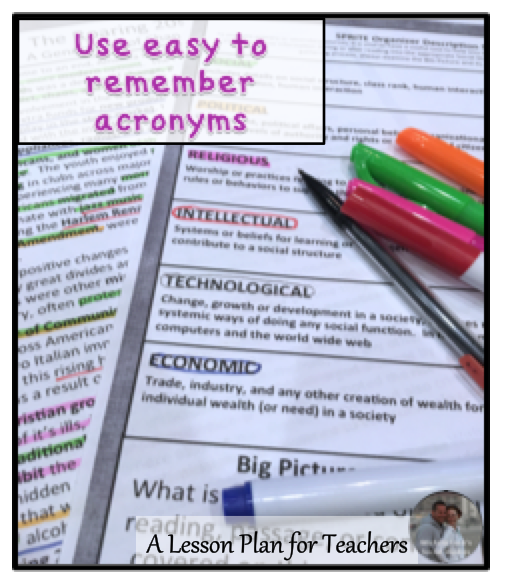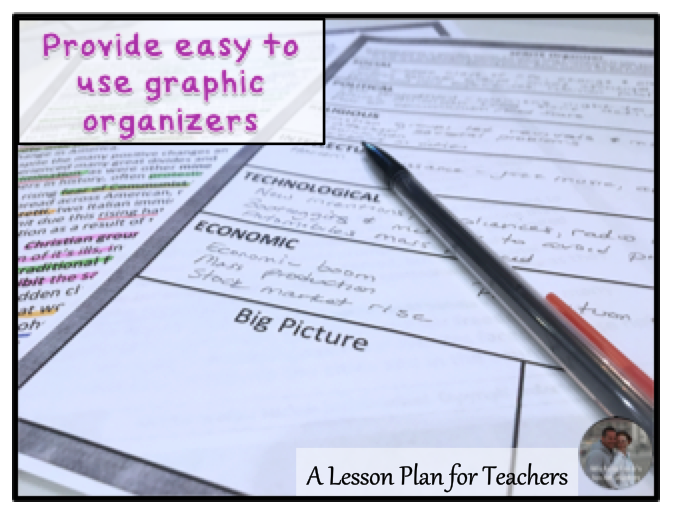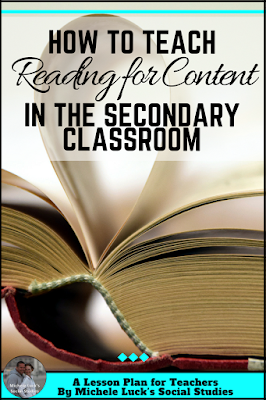
In my classes, I love using acronyms and graphic organizers. If you can find one that works best for your students, make it habit for them and utilize the tool throughout the year to help them become accustomed to tackling the text with ease.
Easy to Use Acronyms for Reading for Content:
- SPRITE – Social/Political/Religious/Intellectual/Technological/Economic
- PERSIA – Place/Economics/Religious/Social/Intellectual/Arts
- BRAGS – Brainstorm/Read/Anticipate/Graph/Summarize
- SPEC – Social/Political/Economic/Cultural
- OPTIC – Overview/Parts/Title/Interrelationships/Conclusion
- APPARTS – Author/Place/Prior Knowledge/Audience/Reason/The Main Idea/Significance

My favorite acronym for the Social Studies classroom is SPRITE. For all other classes, I’d recommend BRAGS. SPRITE is easy to remember and fun to learn if served with a cool glass of the popular soda. BRAGS works to help students focus while earning praise for a job well done!

Now, take a look at this quick video for a simple introduction on teaching your students how to read for content!
Simple Steps on How-To Read for Content:
- SKIM – Do a quick read just to get the feel of the text. What is the topic?
- Read & Categorize – Begin looking for details and organize those details in a memorable way.
- Record Content – Use a graphic organizer to effectively record important data.
- Research for More – Adding facts and researching with open ended options allows interest to grow.
- Process for Understanding – Taking time to think and to formulate a clear statement on the topic helps to build understanding.
- Examine Results – Determining the significance of a topic will help to define its place in history or in any classroom context.
- Write for Assessment – Putting content into our own words places the value in our hands.
But more important than any skill, tool or step is the learning climate. Make it fun. Make it engaging. Make it interesting. Make it something they will always remember! Make reading for content a task they enjoy instead of one they dread!
Find my SPRITE Reading & Writing Complete Set in my TpT Store!
And take a look at my How-To Series for other great tips on teaching in the Secondary classroom!

Happy Teaching!